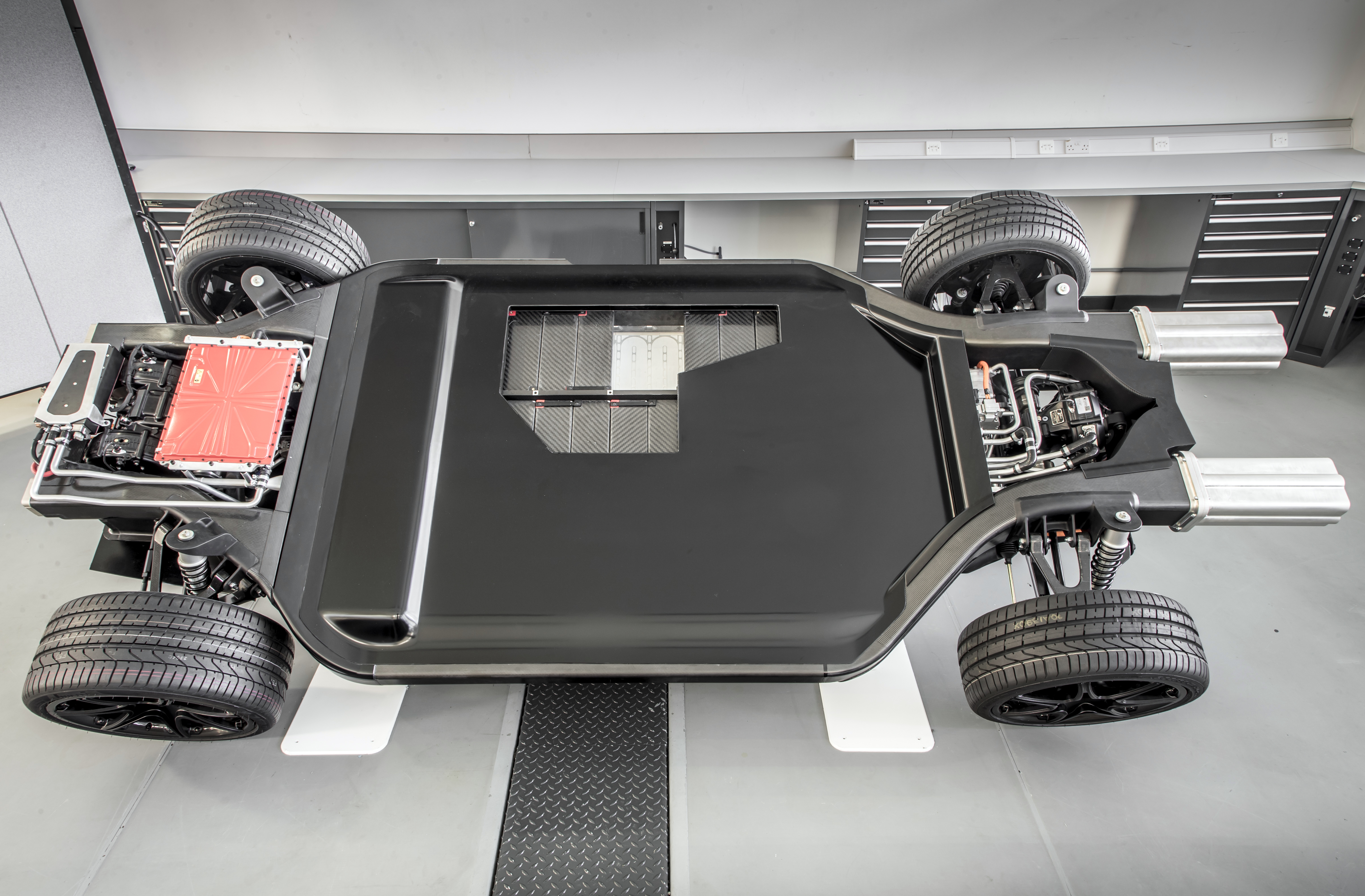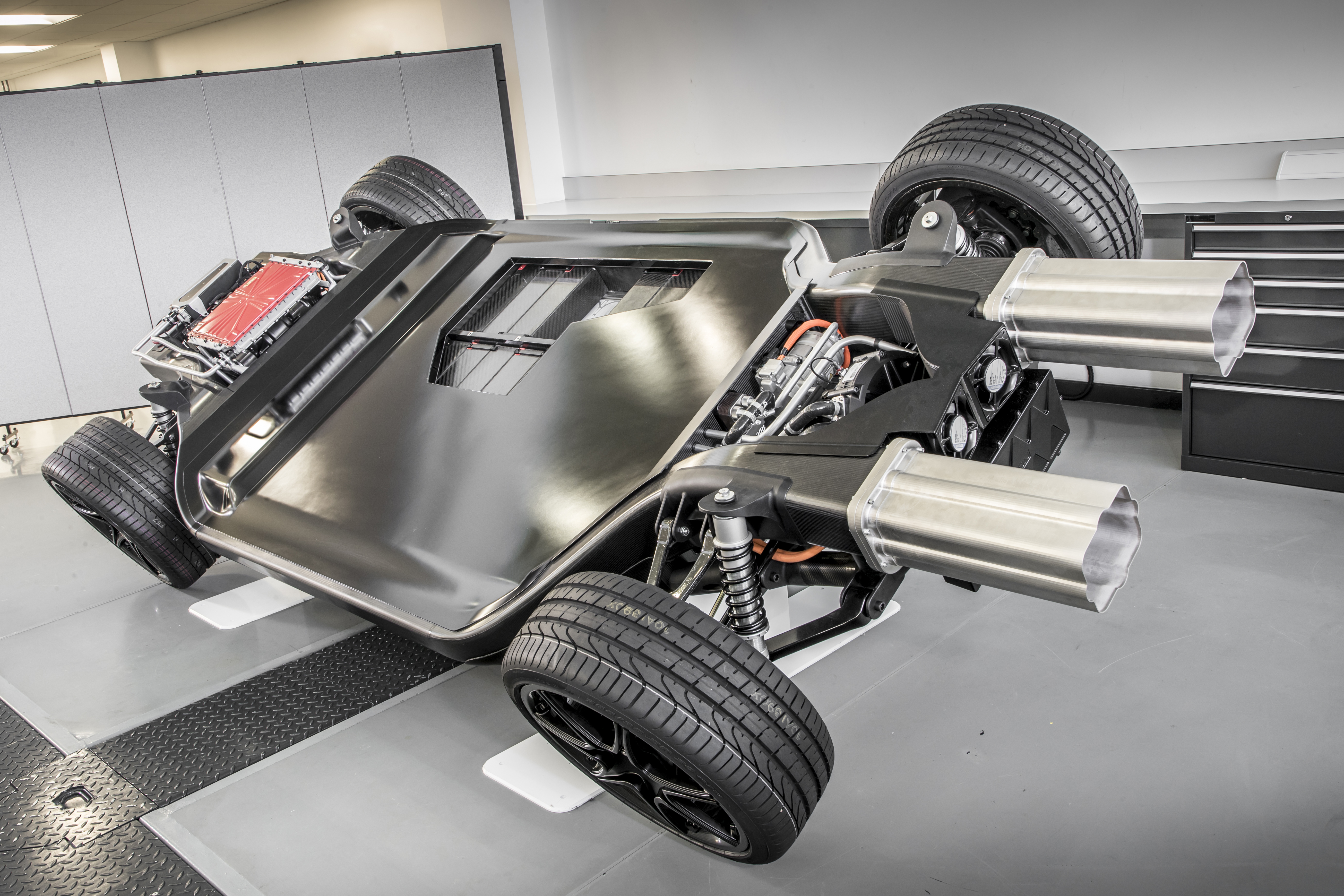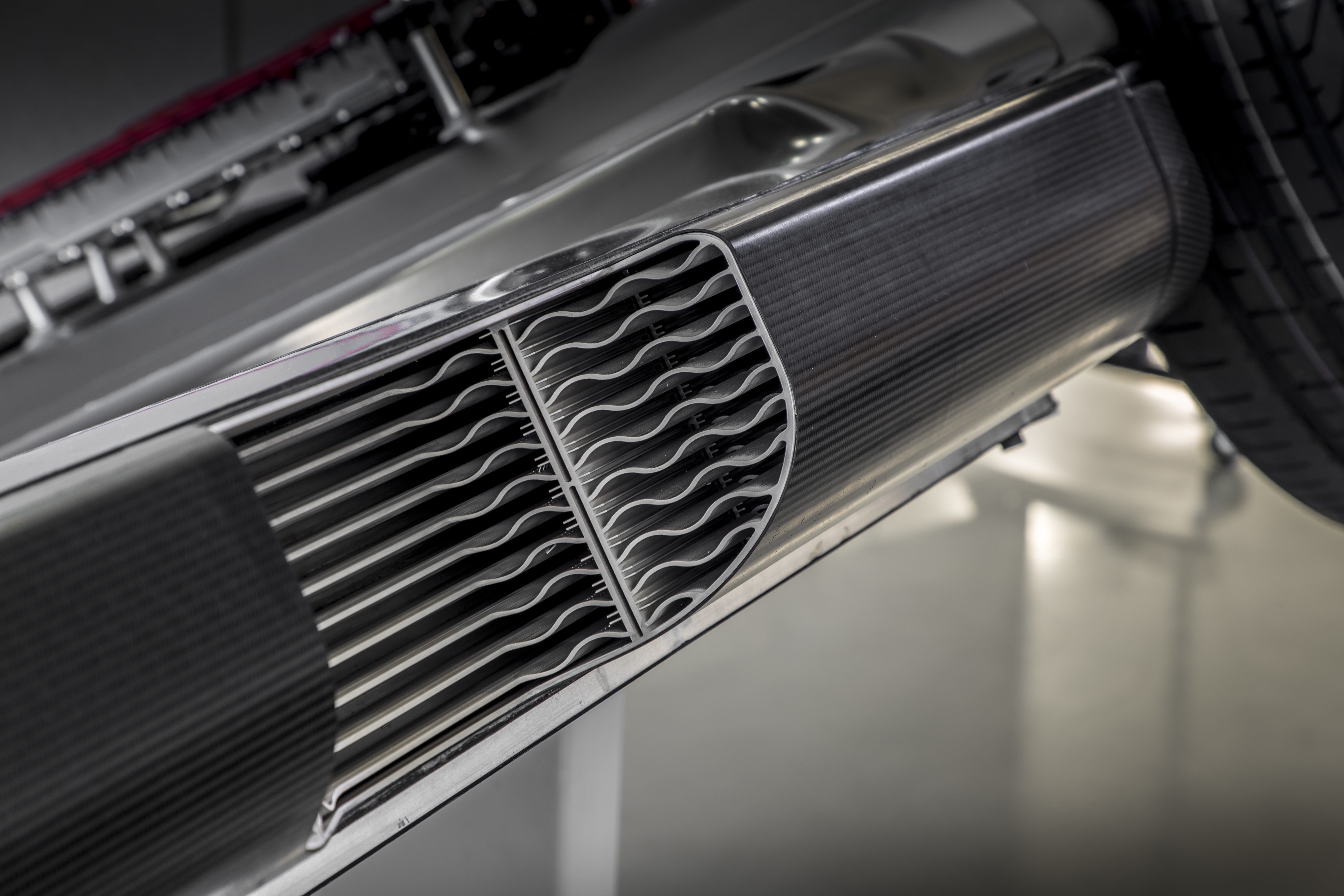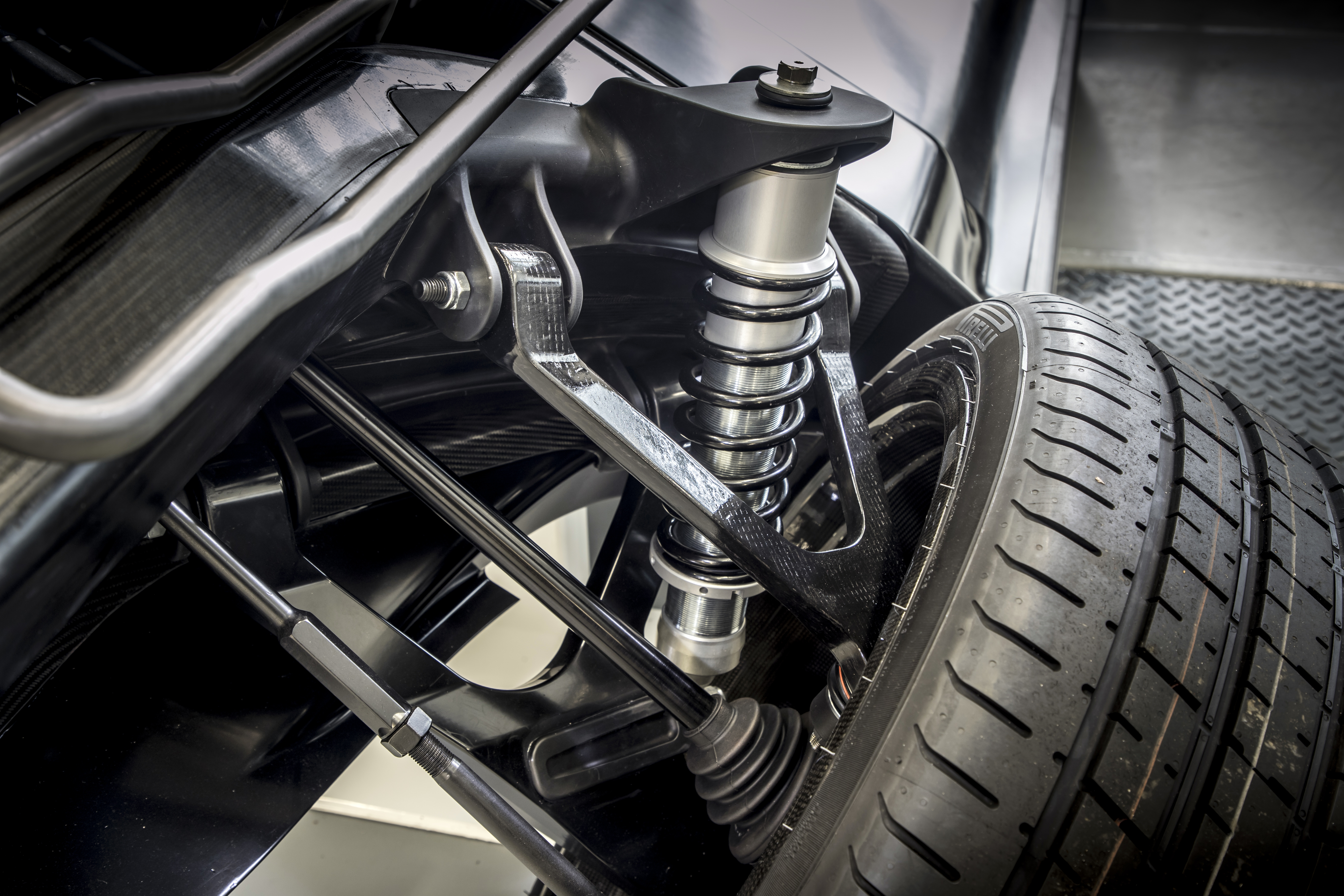Formula One’s engineering philosophy, embodied in a platform for automotive manufacturers to develop electric vehicles, is also to help wind turbine manufacturers reduce the amount of expensive carbon fibre they currently waste in their production processes, according to Williams Advanced Engineering (WAE).
The offshoot of the F1 racing team dedicated to finding new applications for the expertise it has developed on the world’s motor-racing circuits over its 40 years of competition at the pinnacle of motorsport is currently seeking an automotive OEM partner to help it test its FW-EVX platform, but is already finding new commercial outlets for some of the production processes it had developed during the project.

The FW-EVX is a ‘skateboard’ configuration that is intended to form the chassis and drivetrain for a premium-level electric vehicle. Around 250mm thick, it houses battery packs and a four wheel-drive configuration system with two yokeless and segmented armature (YASA) electric motors driving the rear wheels through an Xtrac transmission, and one driving both front wheels through an Xtrac differential.
The rear motors are independent of each other, making them capable of torque vectoring to enhance steering and performance. The three motors together give a total power of 480kW, equivalent to 652bhp. Wishbone suspension for all four wheels and a cooling system for the batteries are also included in the package.
The platform is modular and scalable, with the basic version WAE has developed weighing about 800kg and having a wheelbase of around 2800mm: equivalent to an Audi A4 or BMW 3-series.
Total weight of a vehicle would be down to the developers, said WAE technical director Paul McNamara, but if lightweighting techniques were used, a vehicle the same size as a BMW M4 could weigh 1750kg, which is heavier than the standard petrol-driven M4 car but 400kg lighter than a Tesla Model S (and with more power). Modules could be added or removed to make a chassis for a smaller or larger car, said McNamara.
The platform has no radiators; instead, cooling is incorporated into the structure itself. The carbon fibre-clad 'skateboard’ is composed of an aluminium extrusion with finned channels running front to back, serving two purposes. Air is drawn in through the ‘crash-can’ structures at the front of the chassis, through the channels in the sills, to circulate around the battery to cool them, exiting through a diffuser structure at the rear to enhance downforce. Water also circulates through this structure in its own channels, cooled by the air and in turn cooling the electronics and the baseplate on which the batteries sit.
The channelled structure is also part of the chassis’ safety system, with the fins doubling as crumple zones to absorb the force of side-pole impact away from the batteries.

WAE’s origin was in developing battery technology for a hybrid concept car: the Jaguar CX-75. It later used that expertise to develop the batteries for the first Formula E electric racing cars; encased in carbon fibre, these also formed part of the structure of the car’s chassis, and from 2019 will see service as the basis of the battery for the electric Aston Martin RapidE, for which WAE is providing systems integration.
The same technology resurfaces in the FW-EVX, with the chassis containing 38 battery modules based on lightweight LG “pouch” cells encased in a foam polymer structure that protects them from vibration while also acting as thermal insulation. Each module, containing 10 pouch cells, is rated at 2.1kWhr, giving a total of almost 80kWhr storage for the whole unit.

The batteries also show off one of the manufacturing innovations in the FW-EVX: a system known as 223 (the name is in fact descriptive rather than cryptic, referring to transforming a 2D structure into a 3D one).
This is easiest to imagine as a way of making carbon fibre boxes by opening them out into a flat structure that is simpler to make. The areas of this flat structure corresponding to the faces of the box are cured while leaving the borders between each face flexible, forming hinges that allow the flat structure to be folded into a box, before the whole item is cured to rigidity.
This solution is suited for deep but narrow boxes such as the battery housing. Technical specialist Iain Bomphray said “You could technically make them by the conventional manual lay-up technique - building up layers of resin-impregnated carbon fibre fabric on a tool by hand, then curing them. But because the box is so deep, this would require considerable hand-skills to get the layers in, and it take ages to build each box.”
The aerospace sector generally uses robotics to lay up such structures, as The Engineer has reported, but this also tends to be very slow. WAE is discussing the development of 223 for ‘several non-automotive applications’, Bomphray said.
In the FW-EVX, the battery modules are arranged in rows of three across the vehicle, but because of the modular construction it would be possible to increase or decrease the number of modules. The 38-module set weighs 340kg. Another option might be to make half-height cells, MacNamara said; this would allow the driver position to be lowered for a sportier-feeling vehicle. The remaining battery capacity would be made up by packing a ‘transmission tunnel’ along the car’s centre-line. “These type of skateboard systems are very well suited to SUVs, because they are deep and SUVs have a high driving position,” MacNamara explained. “In a conventional sports car the base plate is just millimetres thick to get the driver close to the road, so you’d need the different architecture to duplicate that feeling.”
The batteries have a hard connection to the electrical system busbar, but communicate with their management system wirelessly, saving further weight in electrical connections; and the modules are ‘dry’, cooled by contact only with the base-plate. Cooling is refrigerated to keep the batteries below ambient temperature in use, which improves their lifetime; but the modules contain a thin aluminium-film heater; these warm the cells on cold days when the system is switched on, to ensure the car will start smoothly despite the weather.
A further innovation is found in the suspension wishbones, which are made from carbon fibre using a high-pressure resin transfer process called Racetrak, developed in collaboration with the National Composites Centre in Bristol.

Racetrak uses oriented fibres in a loop, making it easy to automate. This enables the components to be made of 80 per cent recycled carbon fibre by weight, thereby reducing waste and cutting the cost of components. Each wishbone costs about £20, as opposed to £70 for an aluminium one; they also weigh 40 per cent less.
Typically for motorsport, developing Racetrak pushed the technology available: the rear wishbone was the thickest component ever made in Bristol’s press, Bomphray said. The process also enables thin-film wireless sensors, bearings and bushes to be embedded into the component’s structure during manufacture, which will facilitate maintenance.
A standard composite press can turn out 500,000 wishbones per year, Bomphray claimed. A patent is pending on the process, but wind-turbine manufacturer Vestas is already planning to use Racetrak to make carbon-fibre ribs for turbine blades, the rest of the blade would be formed from a stressed-skin fabric ‘sock’ pulled over the ribs.
In performance terms, McNamara claims the chassis can do 343miles on a full charge. Much of the speed performance would depend on body aerodynamics, of course, so those figures will emerge from testing once WAE has secured a development partner.
Williams HQ is set up for low-volume manufacturing, as it makes all its Grand Prix cars on site. Outside the racing season, however, the factory lies idle (using this spare capacity, as well as the team’s two wind tunnels and its simulation hardware, is one of the raisons d’être of WAE) and McNamara said that the factory could produce up to 100 FW-EVX chassis per year. The cars they would underpin would not be cheap: McNamara estimates a minimum price point around £150,000 per unit. For comparison, that is more expensive than an Audi R8, but about the same as a Porsche 911 Turbo or a McLaren 540C: the ‘entry-level’ vehicle from Williams’ grid rival’s automotive arm.





Red Bull makes hydrogen fuel cell play with AVL
Formula 1 is an anachronistic anomaly where its only cutting edge is in engine development. The rules prohibit any real innovation and there would be...